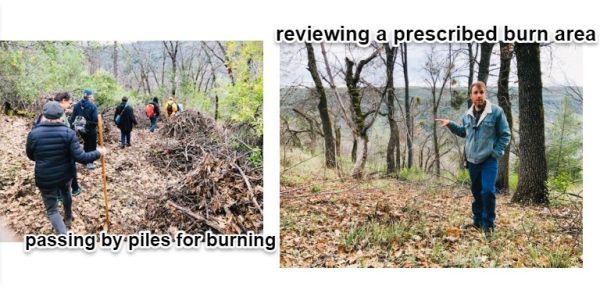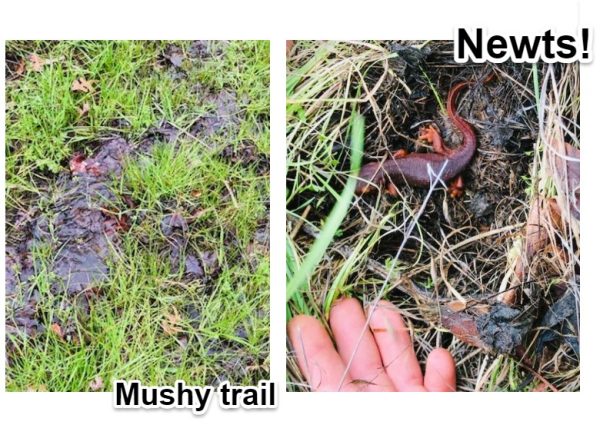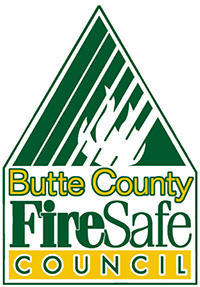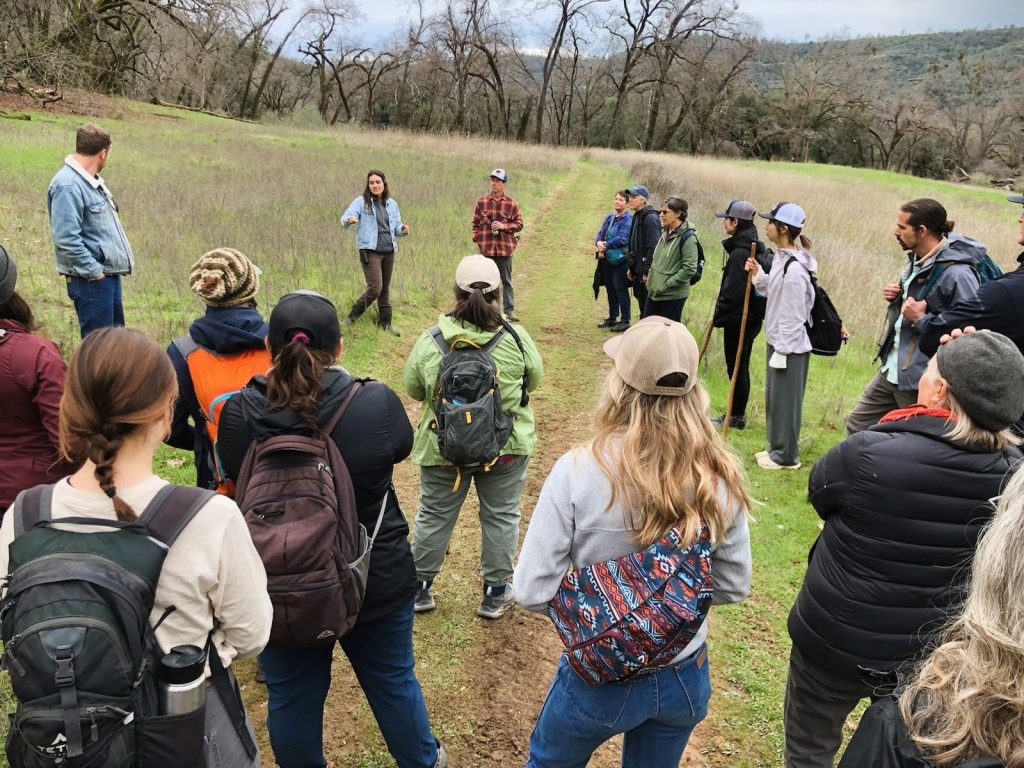Coasting up HWY 32 in cruise control, it’s easy to miss the turnoff for the Big Chico Creek Ecological Reserve (BCCER). If you do manage to turn on to 14 Mile House Road, you will find yourself transported into a model landscape focused on holistic wildland management. Massive oaks tower over 7,000+ acres of seemingly unspoiled foothills. It’s a grand sight you can’t get anywhere else.
The BCFSC was elated to join a diverse group of our partners on a guided tour as part of the Butte County Collaborative Group (BCCG).
Walking downhill along natural deer paths, we visited several units that have been treated with a combination of hand-thinning and prescribed fire. Each stop added to the groups’ understanding of what ecologically considerate fire partnership looks like in practice. For example, some sites had been treated with prescribed fire over the course of five sperate, low-intensity prescribed burns. Due to centuries of fire suppression, human intervention in establishing these regular intervals of introducing fire to the landscape results in measurably positive ecological benefits, promoting native species and effectively managing hazardous fuel loads that have accumulated over decades.

Recent rains meant that our hike took a squishy turn as we went deeper into the BCCER; several vernal pools and new streamlets had popped up overnight. At a key stop, we took in a large meadow view. The gradual slope was green and lush and totally free of star thistle (quite a sight for anyone who’s battled star thistle and lost!). One half of the meadow even showcased blue wildrye (Elymus glaucus) throughout. Taller and light tan in color, these shoots sprang up through the greener meadow grasses. There’s not much more of a natural California sight than seeing native grasses swaying in the foothills of our beloved Sierra Nevadas.
Ecologically conscious, strategic land management made this scene possible, in-part due to prescribed fire. By and large, the success of the native grasses is also a testament to the success of the treatments in this meadow. Not only was it cleared with standard weed trimmer tools (which created a nice green meadow, though ultimately devoid of native species), but the addition of a prescribed fire resulted in the healthiest habitat.

Speaking of habitat– that’s what all of this work is about, right? Making a healthy and safe habitat? While we didn’t see many of the ever-present megafauna the BCCER is known for, we were lucky enough to encounter large Sierra newts (Taricha sierrae), making this truly a “newt to miss” event.

